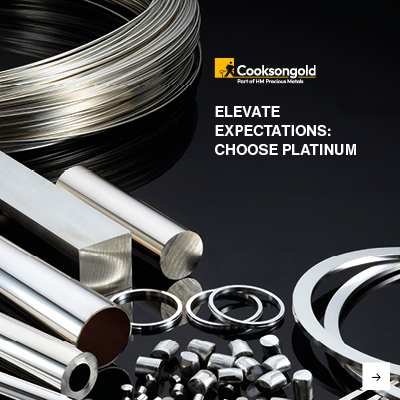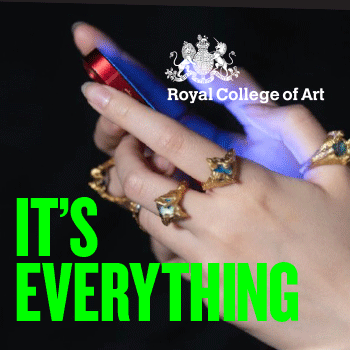LOEWE FOUNDATION Craft Prize 2024 finalists
Announcing the LOEWE FOUNDATION Craft Prize 2024 finalists
Reading Time:
1 min {{readingTime}} mins
LOEWE FOUNDATION announces the 30 artists shortlisted for the 2024 edition of the LOEWE FOUNDATION Craft Prize. The finalists’ works will be exhibited at Palais de Tokyo in Paris from 15 May until 9 June 2024.
The works selected for the LOEWE FOUNDATION Craft Prize shortlist will go on display at Palais de Tokyo in Paris from 15 May to 9 June 2024. Many of the works repurpose found or recycled materials and there is a focus on the elevation and transformation of the everyday, such as rubber tyres and compressed wood, which are not traditionally associated with craft. A combination of skill and mastery of technique, guided by intuition and chance, has been utilised in the creation of several works on this year’s shortlist and many feature organic, biomorphic forms that push materials to their physical limits to present new configurations and unique shapes not seen before.
This year’s finalists were chosen by a panel of experts from over 3,900 submissions by artisans representing 124 countries and regions. The finalists, representing 16 countries and regions, work across a range of mediums including ceramics, woodwork, textiles, furniture, paper, basketry, glass, metal, jewellery, lacquer and leather. In their deliberations, the panel sought to identify the most outstanding works in terms of technical accomplishment, skills, innovation and artistic vision.
A tribute to LOEWE’s beginnings as a collective craft workshop in 1846, the annual Craft Prize was launched by the LOEWE FOUNDATION in 2016 to celebrate excellence, artistic merit and innovation in modern craftsmanship. The award, envisioned by LOEWE creative director Jonathan Anderson, aims to acknowledge the importance of craft in today’s culture and to recognise artists whose talent, vision and will to innovate, promise to set a new standard for the future.
Works by the 30 finalists will go on display at Palais de Tokyo in Paris, Europe’s largest contemporary art centre, and will be documented in an exhibition catalogue. Previous iterations of the prize have been exhibited at Colegio Oficial de Arquitectos de Madrid (COAM), Madrid (2017); The Design Museum, London (2018); Isamu Noguchi’s indoor stone garden ‘Heaven’ at the Sogetsu Kaikan, Tokyo (2019); digitally in a joint presentation with Musée des Arts Décoratifs, Paris (2021); Seoul Museum of Craft Art (SeMoCA), Seoul (2022) and in Isamu Noguchi’s studio at the Noguchi Museum, New York (2023).
Jonathan Anderson stated at the award’s inception: ‘Craft is the essence of LOEWE. As a house, we are about craft in the purest sense of the word. That is where our modernity lies, and it will always be relevant.’
Regarding the selection process, Anatxu Zabalbeascoa, Executive Secretary of the LOEWE FOUNDATION Craft Prize Expert Panel, said:
‘With the seventh edition of the LOEWE FOUNDATION Craft Prize, we continue to push the boundaries of craft and expand its horizons, with a showcase that includes works created from recycled materials, as various as glass, copper, wire and silicone, by artists around the globe. Our inspiration stems from a celebration of everyday monumentality, that paradoxically challenges the distinction between art and craft. Craft, to us, embodies creativity, meaning, culture, and technique and we believe that traditions are best preserved when they are questioned and reimagined.’
A jury composed of 12 leading figures from the world of design, architecture, journalism, criticism, and museum curatorship will select the winner of the 2024 LOEWE FOUNDATION Craft Prize. The winner will be awarded €50,000 and the announcement will be made on 14 May 2024, at the opening of the exhibition at Palais de Tokyo.
The selected finalists for the LOEWE FOUNDATION Craft Prize 2024 are (in alphabetical order, with country or region):
- Andrés Anza (Mexico)
- Miki Asai (Japan)
- Patrick Bongoy (Democratic Republic of the Congo) emmanuel boos (France)
- Chun Tai Chen (Taiwan Region)
- Eunmi Chun (Republic of Korea)
- Ange Dakouo (Mali)
- Ken Eastman (United Kingdom)
- Jeremy Frey (United States)
- Karl Fritsch (New Zealand)
- Kevin Grey (United Kingdom)
- Raven Halfmoon (United States)
- Yuefeng He (Mainland China)
- Ferne Jacobs (United States)
- Racso Jugarap (Philippines)
- Hiroshi Kaneyasu (Japan)
- Heechan Kim (Republic of Korea)
- Kira Kim (Republic of Korea)
- Alison Croney Moses (United States)
- Gaku Nakane (Japan)
- Aya Oki (United States)
- Ozioma Onuzulike (Nigeria)
- Weon Rhee (Jongwon Lee) (Republic of Korea) Ikuya Sagara (Japan)
- Luis Santos Montes (Spain)
- Saar Scheerlings (Netherlands)
- Polly Adams Sutton (United States)
- Kazuhiro Toyama (Japan)
- Norman Weber (Germany)
- Debaroun (Dahyeon Yoo) (Republic of Korea)
After deliberations in Madrid, Expert Panel selected the 30 finalists for the seventh edition of the LOEWE FOUNDATION Craft Prize.
The LOEWE FOUNDATION Craft Prize seeks to acknowledge and support international artisans of any age (over 18) or gender who demonstrate an exceptional ability to create objects of superior aesthetic value. By identifying work that reinterprets existing knowledge to make it relevant today while reflecting its maker’s personal language and distinct hand, the LOEWE FOUNDATION aims to highlight the continuing contribution of craft to the culture of our time.
All entries shouldfall within an area of applied arts, such as ceramics, bookbinding, enamelwork, jewellery, lacquer, metal, furniture, leather, textiles, glass, paper, wood, etc., be an original work, handmade or partly handmade, have been created in the last five years, be one-of a-kind, have won no prizes previously, demonstrate artistic intent.
The Prize for the winning entry is 50,000 euros.
Name of finalist: Miki Asai
Country/region of entry: Japan
Name of work: 'Still Life'
Category: Jewellery
Materials: Wood, paper, Kashu, eggshell, seashell, mineral pigment
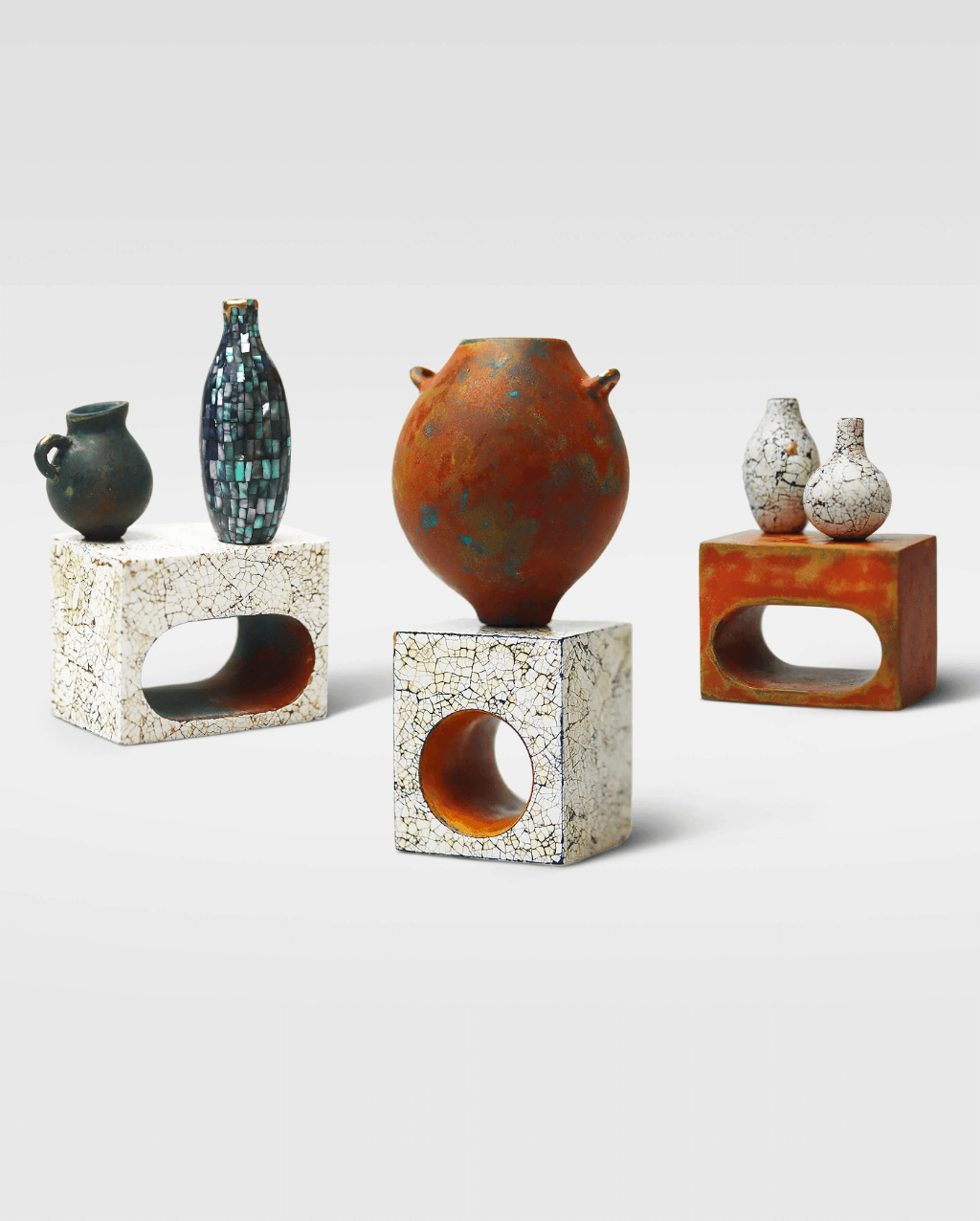
Taking inspiration from still-life paintings as a metaphor for daily life, miniature vessels form the basis of these three sculptural rings. The body of each vessel is formed from paper, and the surfaces are variously treated with tiny fragments of crushed eggshell, pressed to create the illusion of cracked glazing and mosaicked with seashell to add iridescence. Layers of mineral pigment are then applied to create variations in colour before the vessels are mounted onto hollowed-out wooden blocks. The surface of the wood is also treated using these materials and techniques. The rings are finished using kashu-urushi, a type of lacquer sourced from cashew trees, sanded to create a smooth finish.
Name of finalist: Eunmi Chun
Country/region of entry: Republic of Korea
Name of work: 'Wings of the Blue Bird'
Category: Jewellery
Materials: Cow's small intestine, thread, ink
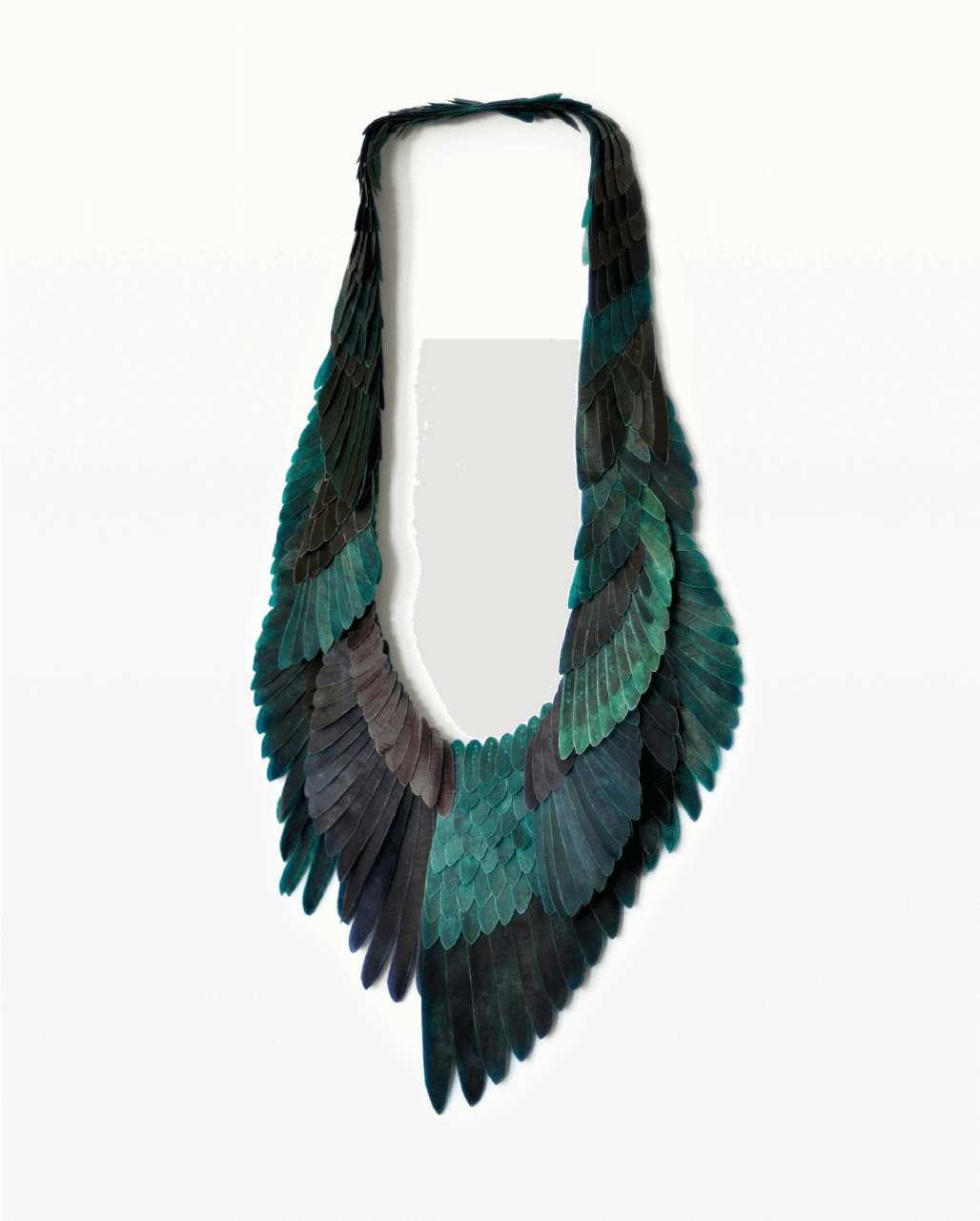
This feather-shaped necklace is made using an innovative technique unique to the artist. The work is constructed entirely from the small intestines of cows. After being dried and dyed in shades of blue on wooden boards to transform them into a parchment-like material, the intestines are cut to resemble plumage, before being carefully sewn together to create the necklace. The work explores notions of masquerading and projecting, and presenting an assumed identity to the world.
Name of finalist: Karl Fritsch
Country/region of entry: New Zealand
Name of work: 'Pukana'
Category: Jewellery
Materials: Silver, gold, synthetic gemstones
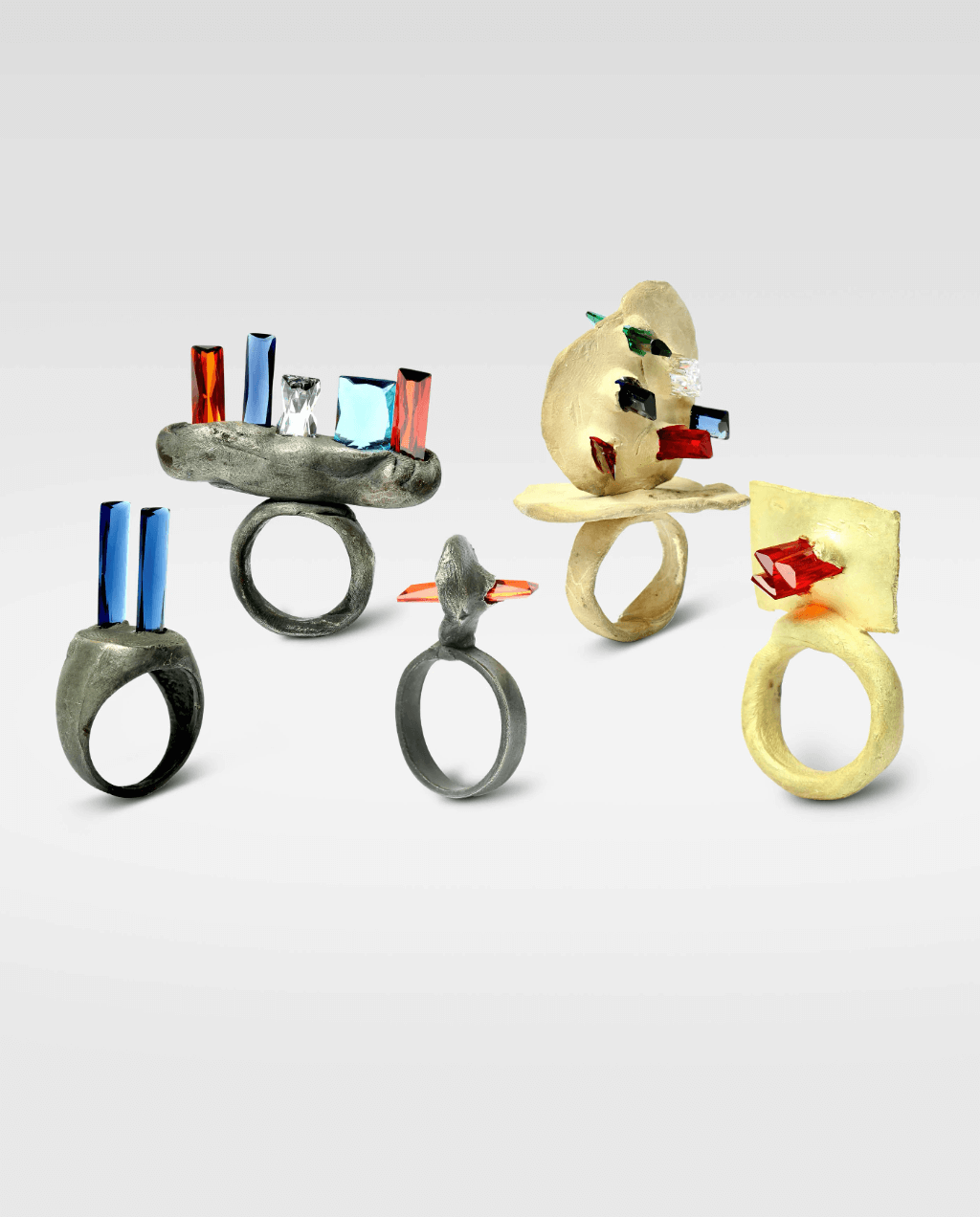
This set of five contemporary rings, crafted in silver and gold, demonstrates an innovative technique that upends the traditional method for setting stones in jewellery. The shape of the rings is modelled using wax which is punctuated with gemstones. After the casting process, these synthetic gemstones, including laboratory-created imitation sapphires and rubies, are reinserted into the holes and fixed in place. The bands feature unexpected spontaneous forms, and in many of the rings the gemstones protrude, moving through, rather than sitting on top of, the rings.
Name of finalist: Kevin Grey
Country/region of entry: United Kingdom
Name of work: 'Displaced'
Category: Metal
Materials: 1.2 mm bronze sheet
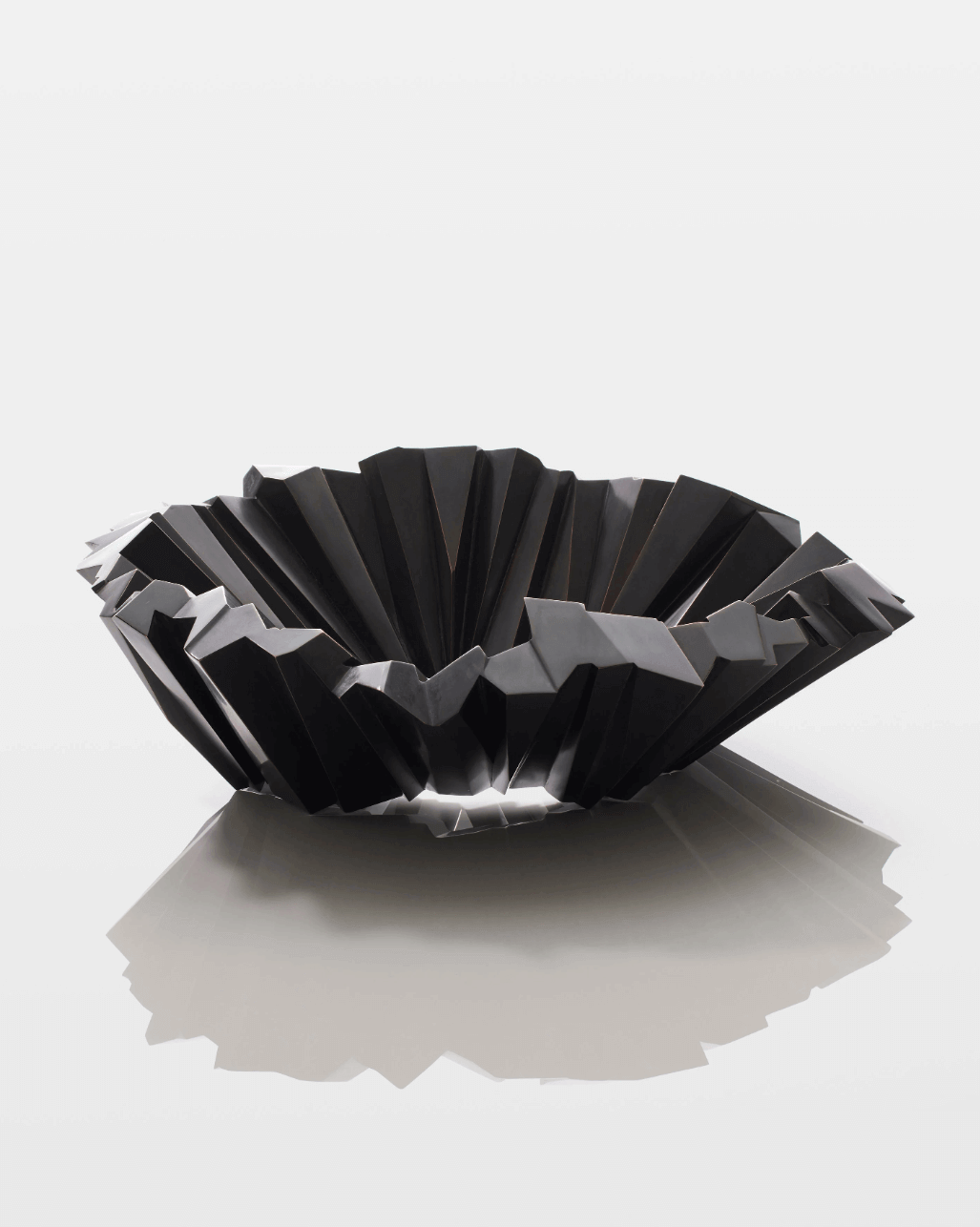
Bronze sheet has been cut into individual panels which are TIG-welded together to create a hollow circular band with high-relief jagged edges. The technique is inspired by the artist’s background in car manufacturing and design. Created without a preparatory sketch or drawing, the angle of each opposing panel has been decided intuitively, and the resulting undulating edges give the work a sense of constant movement. The jagged edges of the work represent the hostility faced by displaced people around the world and the base only partially touches the surface it is placed on, allowing pockets of light to stream through.
Name of finalist: Racso Jugarap
Country/region of entry: Philippines
Name of work: 'Echinoid'
Category: Metal
Materials: Galvanized Iron, gold leaf, resin
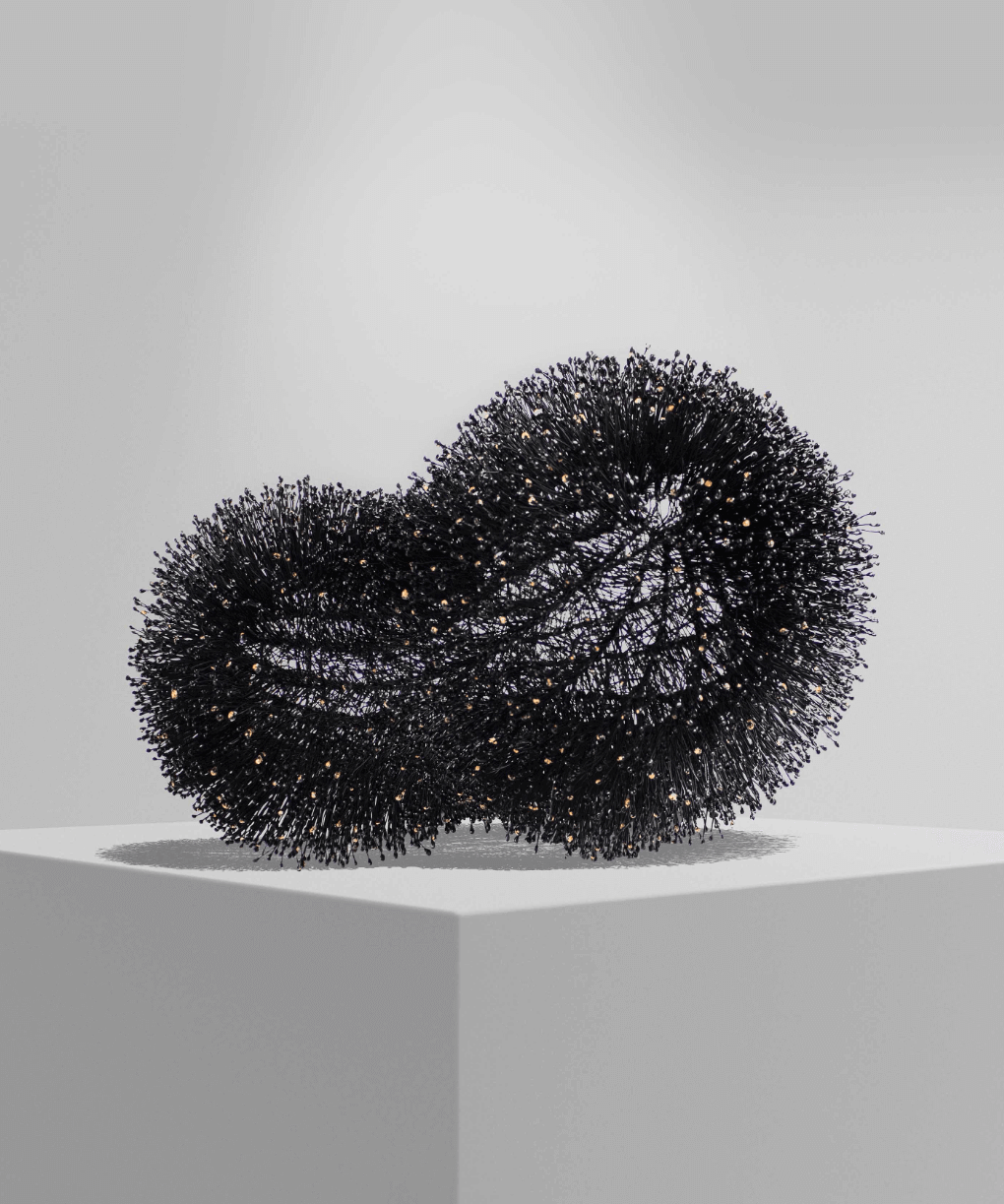
Galvanised wires, delicately shaped into wishbones, have been dipped in resin and painstakingly soldered one by one onto a grid to create this gourd-shaped work which takes inspiration from sea urchins. The work has been airbrushed with black and adorned with specks of delicate gold leaf, before being sealed with a final coat of resin that adds lustre and evokes dew drops or fossilised insects encased in amber.
Name of finalist: Norman Weber
Country/region of residence: Germany
Name of work: 'Juwel'
Category: Jewellery
Materials: Plastic, acrylic paint
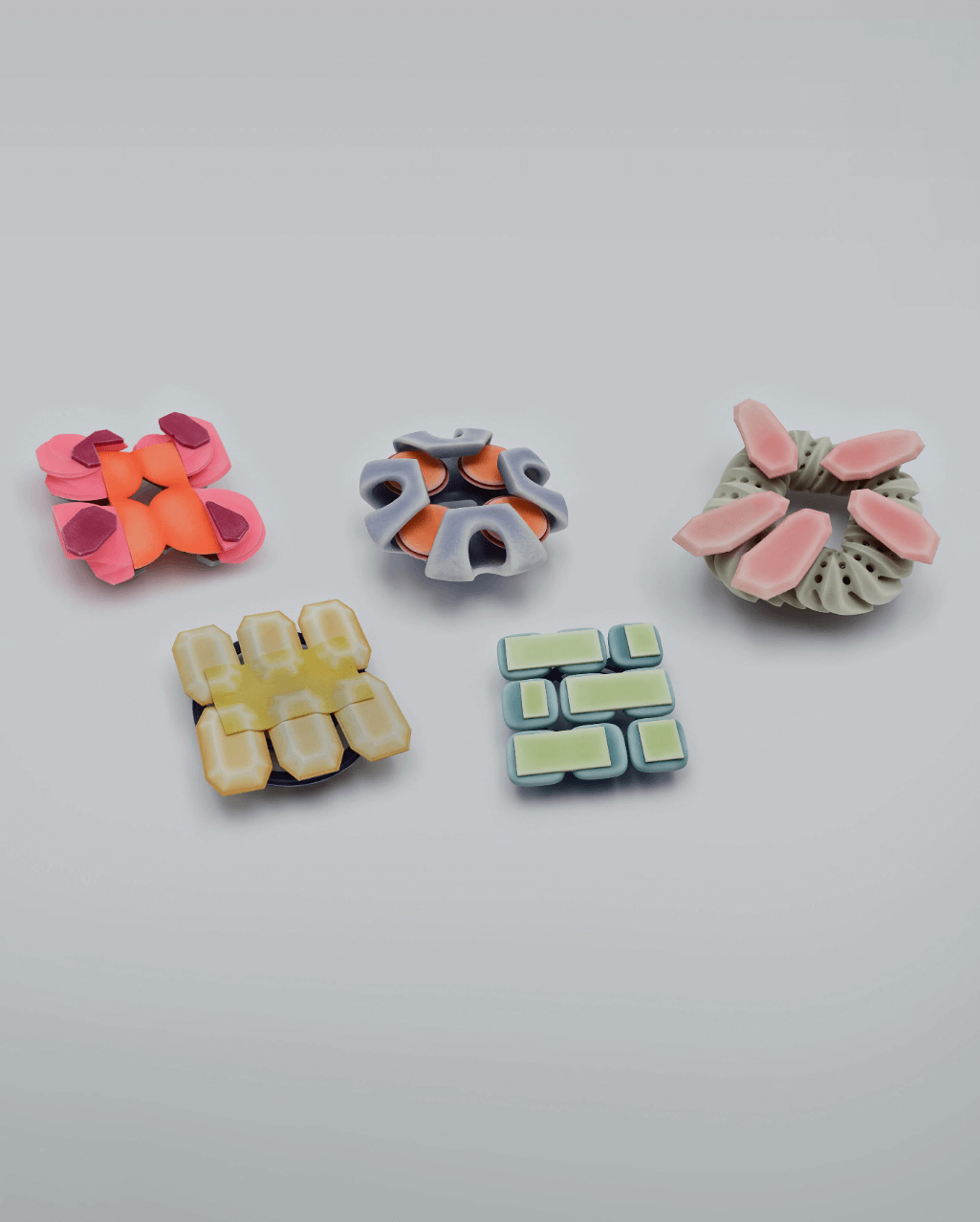
This series employs 3D-printed plastic to create kaleidoscopic jewellery. Each individual piece has been created using computer-aided design (CAD), and painted with acrylic in oranges, yellows and greens to mimic the appearance of found objects which have been weathered and bleached by the sun. Assembled, moulded and surface-treated by hand, the works appear to feature an array of faceted and uncut gems, arranged in concentric circles, despite being crafted from non-precious materials.
Name of finalist: Kazuhiro Toyama
Country/region of residence: Japan
Name of work: 'Biophilia: Celestial Shaped Vessel'
Category: Metal
Materials: Copper
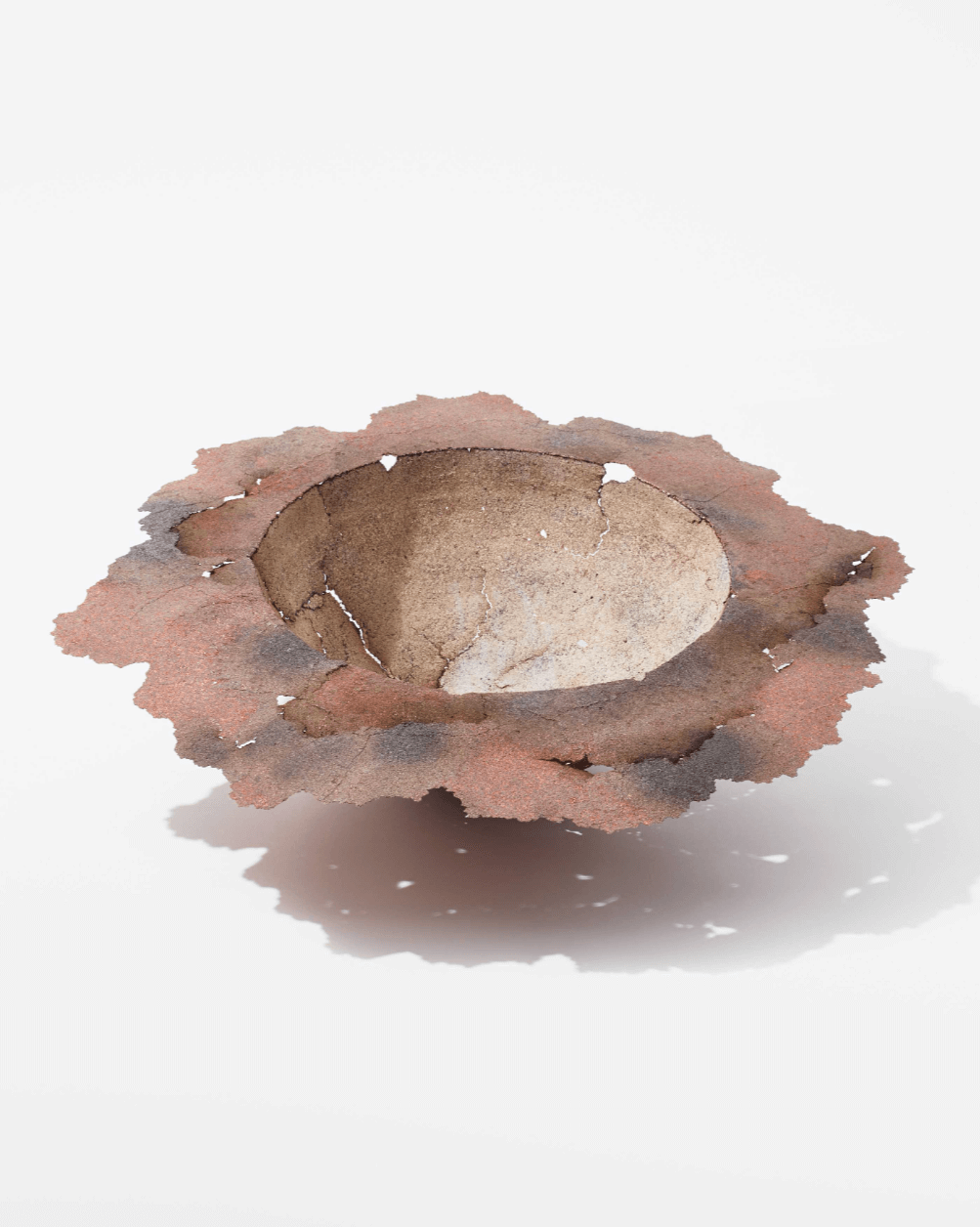
Innovative techniques which disrupt our preconceptions of the properties and behaviours of metal have been used to create this work. The artist has created a new technique based on thermal spraying, an industrial coating process. Melted copper, which in its liquid state is almost uncontrollable, has been sprayed onto a hemisphere-shaped mould. The resulting vessel has a large outer rim and sections have been selectively oxidised using heat. Areas of cracking formed during the cooling process further enhance the form’s planetary likeness and lend a fragile quality which speaks to wider narratives around social and environmental collapse.
Author:
Published:



